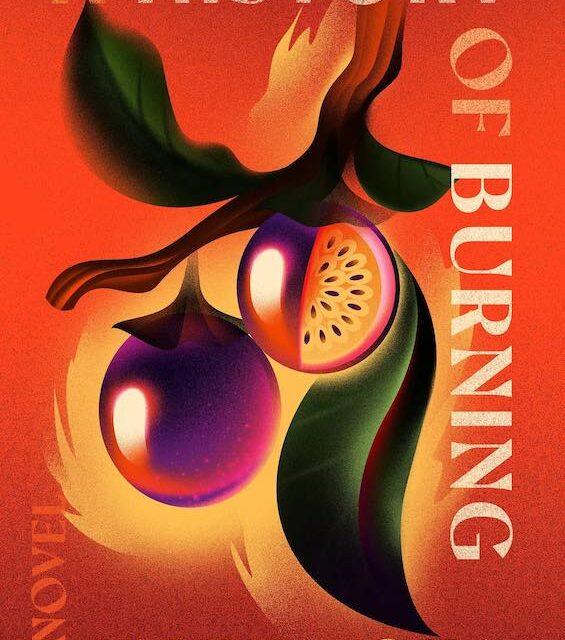
Some three million people of Indian origin live today in the nations of southeast Africa. Although trade and migration between India and Africa reach as far back as the first millennium, much larger numbers arrived there late in the nineteenth century as indentured laborers under the British. One of the largest groups of Indian migrants—some 32,000 all told—came to work on the Kenya-Uganda Railway from 1896 to 1901. Pirbhai, the protagonist of this Indian diaspora novel, was among them.
Having been dragooned by British agents in his native Gujarat, he found himself in virtual slavery working under perilous conditions, surviving only by his wits. Unlike most of his fellow laborers, he stayed after escaping the terrors of the jungle—and eventually founded the family whose story Indo-Canadian author Janika Oza tells so well in A History of Burning.
Estimated reading time: 5 minutes
The Indian diaspora in East Africa
British and possibly Canadian readers may be at least superficially familiar with the modern history of East Africa. With few exceptions, Americans are not. And Oza’s novel offers an introduction. Following Pirbhai’s wife and children, and their own spouses and children, she reveals the tragic history that befell so many Indian migrants to Kenya and Uganda.
In the course of the 20th century, they experienced the privations of the First World War, when 250,000 East African soldiers and 600,000 porters served the British in what was then German Tanganyika (Tanzania today). Later, they lived through the disruptions of the movements for independence, including the Mau Mau Rebellion (1952-60). Later still, the thousands who lived in Uganda faced the terror of Idi Amin‘s campaign to dispossess and expel them. This, and the constant exposure to racist treatment by native Africans as well as colonial English officials, farmers, and traders, was how Pirbhai’s family experienced life in East Africa.
A History of Burning by Janika Oza (2023) 400 pages ★★★★☆

Life in East Africa as the British Empire retreats
In this, Janika Oza’s debut novel, the larger story of the Indian diaspora emerges clearly. As the New Yorker (July 10 and 17, 2023) tells it, far more eloquently than I can, “Pirbhai’s descendants must navigate a complex social and racial hierarchy. Children are born, daughters married off, and elders are mourned against the backdrop of Pan-Africanism’s rise and the British Empire’s retreat. Oza shows each generation of Pirbhai’s family grappling with what to pass on to the next—a sense of complicity in colonialism; heirlooms and stories from homes long left; anxieties and hopes for the future—and what to let die with them.” This novel of the Indian diaspora tells a tale the whole world should know.
The Indian diaspora worldwide
You don’t have to look far beyond Silicon Valley to understand that overseas Indians are playing a significant role in the United States. Witness Satya Nadella, Microsoft CEO. Sundar Pichai, CEO at Alphabet and Google. Shantanu Narayen, Adobe’s chief executive. And a great many more, not to mention others in professional fields such as medicine, engineering, law, and, more recently, politics. After all, Vice President Kamala Harris is one of the most prominent members of the Indian diaspora.
Worldwide, an estimated 32 million Indians have migrated out of the subcontinent. Some 4.5 million in the United States. Larger numbers in the Middle East and Southeast Asia. And more than 1.8 million each in Britain and Canada. The Economist calls the Indian diaspora “bigger and more influential than any in history.”
The roots of the Indian diaspora lie deep in ancient times. But the exodus—a tiny fraction of India’s vast population—accelerated in the past century and a half with the availability of cheaper and faster international transportation options. And Pirbhai’s journey from Gujarat to East Africa, which launches the tale in this novel, represents the beginning of the tide that has carried so many Indians to new lives far from the subcontinent.
About the author

According to her author website, “Janika Oza is a writer based in Toronto. She is the winner of a 2022 O. Henry Prize for Short Fiction and the 2020 Kenyon Review Short Fiction Contest. She has received fellowships and support from VONA, Tin House, One Story, the Millay Colony, the Toronto Arts Council, the Ontario Arts Council, and the Canada Council for the Arts.” A History of Burning is her debut novel.
For related reading
You might also enjoy:
- Good books about India, past and present
- 20 top books about Africa
- 20 most enlightening historical novels
- The best Indian detective novels
And you can always find my most popular reviews, and the most recent ones, on the Home Page.



























